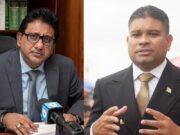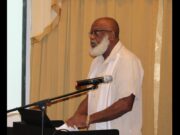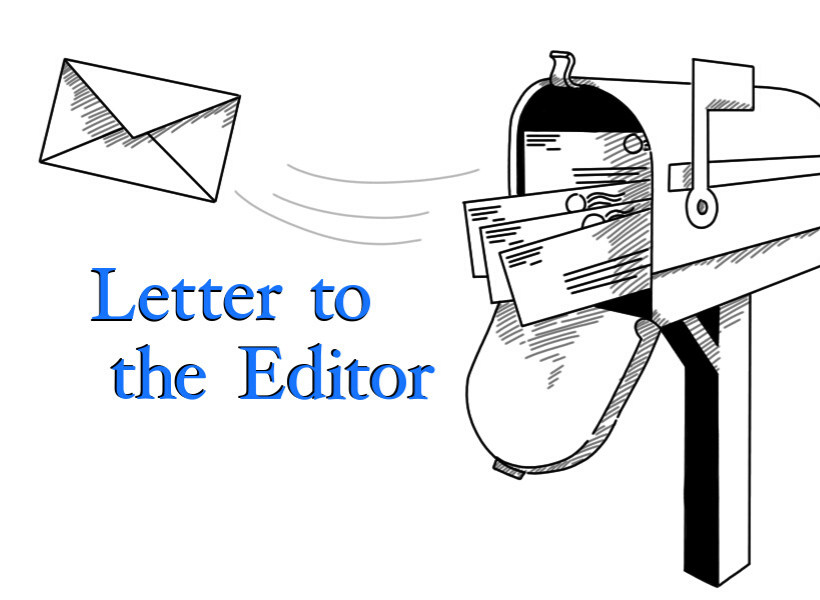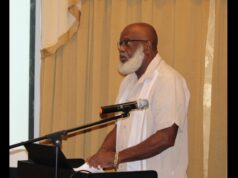That the People’s National Congress (PNC) has never entered government on its own is an irrefutable fact of Guyana’s political history. On the two occasions when this party has assumed the reins of government, it was firstly in 1964 under the leadership of Forbes Burnham in a coalition with the United Force and, more recently, in 2015 as the configuration of the A Partnership for National Unity (APNU) led by David Granger, in coalition with the Alliance For Change (AFC).
In the other elections when the PNC retained power, it did so notwithstanding credible allegations of electoral fraud; in one such case in 1973, I witnessed evidence of this upon my return to my alma mater Queen’s College, which had been the venue for the counting of ballots in the preceding days (y’all don’t come for me: For the record, my father Neville Bissember Snr, whose political philosophy was based on the welfare state, had already exited the independence Cabinet in 1970. He was not part of the socialist experiment that was later articulated in the 1974 Declaration of Sophia, which received critical support from Dr. Cheddi Jagan and proved inhibitive to the course of our economic development, because of its ideological misalignment with western liberal thinking).
Given this background, one would have thought that there would be a preponderance of views forcing the APNU and the AFC to form a coalition to contest the imminent 2025 general and regional elections. The premise for entering into negotiations on forming a coalition must be that the parties felt that the likelihood of victory at the polls was not a sure thing, if they contested on their own. However the imperative of setting aside differences and coalescing (not “coalating”) around the common goal of removing the incumbents, which was a powerful motivational force ten years ago, seems on this occasion to have eluded Messrs. Aubrey Norton and Nigel Hughes, the two current opposition protagonists. The simple question is Why?
Mr. Norton, in a previous life in the Foreign Ministry, when I was Director of the Department of Legal Affairs and International Organisations, was the Officer with responsibility for the Environment dossier – the international community had not yet transformed the focus into Climate Change – along with other sectoral agencies, in the lead-up to the United Nations Conference on Environment and Development in Rio (UNCED 1992). He acquitted himself well as a skilled negotiator in those complex and tortuous multilateral deliberations on behalf of Guyana and indeed, CARICOM. Alas, the fact that he has been out of the diplomatic game for decades seems to have taken a toll.
As for Mr. Hughes, he has over the years excelled in the court room as being a tough litigator, very often able to wrest key admissions from witnesses, to the benefit of his clients. Perhaps more relevant to the failed coalition discussions however would be whatever skills he may have acquired in alternative dispute resolution (ADR), which requires a different approach from the more confrontational ring-craft of cross examination.
Thus, even though both gentlemen have had exposure to the art of negotiation, albeit at different levels and with different experiences, they were unable to reach a meeting of the minds that was a sine qua non for agreement on forming a coalition to contest the elections. Instead, they have consequently arrived at the challenging situation of contesting the elections separately. So, while they could not agree on who might occupy which seats in the future in the Cabinet room, they somehow seem (more?) comfortable that, in the current circumstances, they can sit together and find common ground on the opposition benches, hoping for enough parliamentary seats to relegate the incumbents to the position of a minority government. Surely, this could qualify as an entry for Ripley’s Believe it or Not!
That a minority PPP/C government could realistically be regarded as a win for the two opposition parties is mind-boggling. In hindsight, it seems the legal draftsman knew quite well what he was doing, in limiting the possibility of formation of a coalition to before the elections and not after the allocation of seats.
Negotiation theory teaches that what was required in the pre-election scenario was for the parties to identify a common interest which would become the overarching mutually desirable objective, to the exclusion of all else – in this case, the removal of the incumbents from government. It does not hurt in the least in situations like these, that a healthy dose of good faith infuses the discussions on both sides. The path to this objective requires compromise and creativity along the way, to reach the proverbial “win-win” solution, where everybody wins – or at least they can leave the negotiation with the feeling that they won!
My negotiation class at the Fletcher School of Law and Diplomacy had, among other things, explored the traditional thinking of setting negotiation outcomes based on the benchmark of what is termed in the literature, the Best Alternative to a Negotiated Agreement (BATNA); I in turn had introduced the concept of a WATNA, a Worst Alternative. I argued that for developing countries the imbalance in negotiation strength often drove them to calculate what I termed “the limits of their desperation”. Analogously, it should have served the interests of both APNU and AFC, and indeed the constituents that they claim to represent, if “the limits of their desperation” had forced them into compromising on a coalition to contest next September’s election. Thus it would be interesting to ponder whether the failure by APNU and AFC to form a coalition and instead to go into the elections separately represents a BATNA, or a WATNA….
I believe it can readily be agreed that for the two main opposition parties, their overarching mutually desirable objective ought to have been the displacement of the incumbents. Other issues like the Prime Ministerial candidate (the so-called running mate), allocation of Cabinet posts and Speaker of the House were all subordinate to the quest for assuming the government under an agreed Presidential candidate. These other issues should have been set aside and dealt with separately; as correctly pointed out by Vice President Bharrat Jagdeo, the APNU and AFC were involved in the time-wasting exercise of squabbling over various permutations of Cabinet positions, even before they got into government (talk about putting the cart before the horse)!
One option would have been for such ancillary issues to be addressed creatively in a binding written agreement, within the context of a post-election time frame. To avoid any “back-sliding” if pre-election commitments were not honoured by one party, the consequence would have been withdrawal from the coalition by the other party, thereby precipitating a collapse of the newly-formed government. Such a collapse is one consequence of what the limits of the parties’ desperation should have imposed upon them, to bring about a successful win-win solution going into the election.
As regards the negotiation process itself, the parties may have committed some fundamental errors, which likely imperiled a successful outcome. It would seem to be the case that those persons who were identified as negotiators may have been limited in the extent of their authority to make clear commitments. It is true that there is value in these types of preliminary discussions being conducted ad referendum, thereby instilling in the process a time element, as well as flexibility. However once issues are elevated to the level of leadership, the buck stops with these two gentlemen: at this stage, the amount of “wiggle room” available to the parties is considerably narrowed.
The record will show that when US President Bill Clinton finally sat down with PLA Chairman Yasser Arafat at Camp David for two weeks in July 2000, a series of technical meetings and pre-negotiation sessions had already been held. In that way, issues could be tested, interrogated and resolved, leaving only the most crucial of decisions for resolution by the leadership. As a corollary to that, there is a lingering debate over whether or not President Clinton’s desire to preserve his legacy in the final months of his Presidency had imposed undue pressure on the time frame for arriving at a solution to the Israeli-Palestinian conflict, in the process derailing the search for a solution.
Setting an unrealistic time frame often puts the process and indeed the parties into a straightjacket that could force unworkable solutions, or as might have been the case here, no solution at all. The deadline of 31 March for the conclusion of the negotiations on a coalition proved unrealistically early, without at the time knowing the date for elections, which was not announced until 25 May. Oftentimes, setting one’s sights on the objective, rather than imposing a deadline, produces the desired result. So, rather than a fixed date, the parties could have done themselves a service by counting backwards, for example, using as a point of reference the deadline for submitting the name of the coalition to GECOM, rather than trying to reach a decision too early and having to declare an impasse.
Then there was another faux pas, of negotiating in public. In delicate matters such as these, it is most times unhelpful for constituents to be reading about progress (or lack thereof) in public statements, especially when such statements are contradictory, or might result in putting the other side on the spot. While a tactical advantage may sometimes be created by a carefully orchestrated leak, the political future of a nation is not the stuff of public “finding and proving” that could put the other side on the defensive. It is also important for accurate records to be kept of what was discussed and decided, at all stages of the negotiation, so that the parties move forward while “singing from the same hymn sheet”. This was not the case it would seem as the negotiation on forming a coalition unfolded, with one side publicly referring to doors not being shut and the other to the need to move on.
In this regard, it would have been extremely counter-productive and disingenuous for one party to insist on having both the Presidency and the Leader of the List, as has been rumoured. In so far as the parties were supposed to be negotiating with a common design, that respectfully is not the kind of negotiation position that represents the search for a compromise solution, if the overarching mutual objective was the formation of a coalition to unseat the incumbents.
If it was neither possible in 1964 under the leadership of Forbes Burnham, nor in 2015 under one of his disciples, the question must then be asked, by what calculus or determination would Mr. Norton have come to the conclusion that in 2025, he could unseat the incumbents by PNC/APNU going it alone? Who or what might have been able to bring Mr. Norton around to this daunting realization? Could it possibly be those arm-chair analysts in “farrin” who often seem to know, from thousands of miles away, what is best for the citizens of Guyana? Ironically, these same characters remain mute when much of what they are complaining about in Guyana is also occurring in the land where they have chosen to live as immigrants, where they are now under threat just for that fact alone.
It should be clear to all reasonable election-watchers that this will be an election with a difference. The homogeneity of the demographic bases of the two main political parties is no longer intact, as the incumbents have made inroads over the past five years into the traditional Afro-Guyanese base of the opposition. The same cannot be said of APNU wooing crossover votes from the traditional Indo-Guyanese base of the PPP/C. It is also the case that the indigenous vote has increasingly become a factor, if not a deciding factor, in the allocation of parliamentary seats: all the major parties except the PPP/C have included a female Amerindian in leadership positions (sorry Madam Minister); hopefully, this is more than an exercise in ticking the boxes of ethnicity and gender. In addition, a new third force in the form of the W.I.N. party, despite its flaws and contradictions, continues to challenge the conventional electoral mathematics, a mere two months after its formation. WIN is drawing support from the traditional ethnic bases of both of the main parties as well as the Amerindian constituency, and has enticed a senior female Amerindian and former PNC/R member into its ranks.
In light of these fundamentally changed circumstances, one wonders how it is that the two main opposition parties were still unable to find realistic compromises and form a coalition to challenge the incumbents, given the electoral history of 1964 and 2015. While APNU and AFC have split their support by going it alone against the PPP/C, the unknown in the equation remains the WIN party, whose popularity could threaten to disrupt the electoral status quo, even without having so far named a Prime Ministerial candidate.
Have APNU and AFC, by failing to set down realistic signposts to get them to the singular objective of a consensus presidential candidate to run on a united slate, thereby handed the incumbents an unassailable advantage on polling day? Will the unplumbed performance of WIN be sufficiently disruptive to create a ripple effect across all sectors of the electorate? The answers, my friend, are not blowing in the wind; in fact according to GECOM, they are weeks away.
Neville J. Bissember











